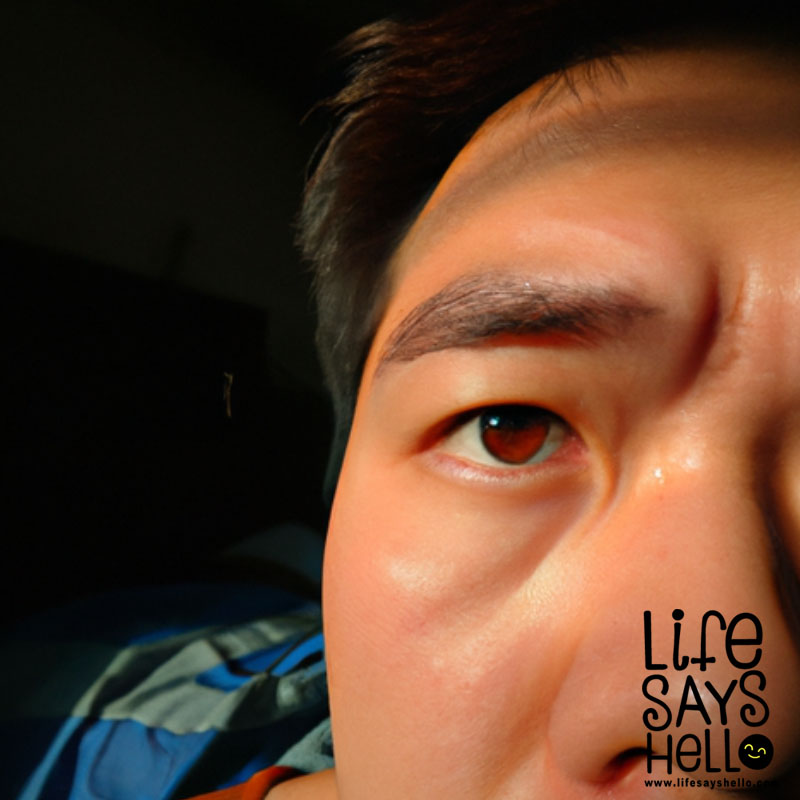Why Does My Knee Hurt When I Bend It?

Have you ever experienced a sharp pain in your knee when bending down to pick something up? Or maybe a dull ache that comes and goes when walking up and down stairs? If you're nodding your head yes, you're not alone. Knee pain when bending is a common complaint that can stem from a variety of underlying causes.
In this comprehensive guide, we'll walk you through the top reasons your knee may hurt when bending, home remedies and lifestyle changes to find relief, and when it's time to see a doctor. Read on to get a handle on what's causing your knee woes and how to banish the pain for good.
What's Causing My Knee Pain When Bending?
Before you can find the right treatment, it's important to understand what's behind your knee pain in the first place. Here are some of the most common culprits of knee discomfort when bending:
Osteoarthritis
Osteoarthritis is a degenerative joint disease that causes the cartilage cushioning the knee joint to gradually wear away over time. As the cartilage breaks down, inflammation and pain occurs. Osteoarthritis most often affects middle-aged and older adults, but injury or obesity can contribute to early onset.
Bending the knee can force bones to rub together since cartilage is no longer there to prevent friction. This causes the characteristic pain and stiffness of osteoarthritis that's worse in the morning or after long periods of inactivity.
Meniscus Tears
The meniscus is a rubbery, C-shaped piece of cartilage that cushions and stabilizes the knee joint. Sudden twisting motions and sports that involve pivoting, like basketball, raise the risk of meniscus tears.
When the meniscus tears, it can get caught between the femur and tibia bones of the knee joint. This causes pain, swelling, and a popping sensation when bending the knee.
Bursitis
There are up to 13 bursae, or fluid-filled sacs, surrounding the knee joint which help cushion bones, tendons, and muscles. If these become inflamed, the condition is called bursitis. It can be caused by repetitive knee bending, kneeling for long periods, or sustaining a blow to the knee.
Bursitis leads to swelling, warmth, and tenderness on the sides or back of the knee. Bending the knee may feel stiff and painful as inflamed bursae get pinched.
Ligament Strains
Two sets of ligaments stabilize the knee joint - the medial collateral ligament (MCL) on the inner knee and lateral collateral ligament (LCL) on the outer knee. Sudden impact, twisting, or overstretching can lead to painful ligament strains or tears.
When a ligament is injured, knee instability and pain occur. Bending the knee can exacerbate ligament strains since it pulls on damaged tissue.
Tendonitis
The quadriceps and patellar tendons connect the kneecap (patella) to the thigh bone and shinbone. Repeated bending and overuse can cause inflammation of these tendons, known as tendonitis or tendinopathy.
Common activities leading to tendonitis include running, jumping, squatting, and climbing or descending stairs. Pain near the kneecap accompanies bending in those with tendonitis.
Bone Fractures or Infections
Stress fractures of the knee or traumatic fractures from falls or accidents can make bending excruciating. A bone infection like osteomyelitis can also travel to the knee joint.
With fractures, pain is focused on the break point. Infections cause redness, warmth, and swelling around the knee. Bending the knee puts pressure on damaged bone, worsening discomfort.
Overuse or Increased Activity
Even if your knee joint is structurally sound, a rapid increase in physical activity can overwhelm tissues and lead to pain. Weekend warriors and new exercisers are at risk, especially if ramping up running mileage or the frequency of workouts.
Overuse pain when bending is usually more diffuse around the knee rather than isolated in one spot. Backing off activity for a few days allows the knee to recover.
When to See a Doctor for Knee Pain
Knee pain when bending can sometimes be managed at home, especially if it comes on after increased activity. But certain circumstances warrant making a doctor's appointment to identify the underlying cause and get proper treatment.
See your doctor if knee pain when bending:
- Is severe, rating 7-10 on a pain scale
- Comes on suddenly after injury
- Is accompanied by significant swelling or bruising
- Causes knee buckling or instability
- Lasts more than a few days with home treatment
- Is worse at night or while at rest
Seeking prompt medical care is key to preserving knee function and mobility. Your doctor will start by reviewing your medical history and performing a physical exam of your knee. They'll check for things like swelling, tenderness, range of motion, and stability.
Based on the exam, your doctor may order imaging tests like:
X-rays to visualize bone structure and check for fractures or arthritis
MRI to look at soft tissues like cartilage, ligaments, tendons
CT scan for suspected bone infection
Ultrasound to assess bursitis
Blood tests may also be ordered to check for infection or inflammation. Once a diagnosis is reached, your doctor will recommend the appropriate treatment plan. This may include:
- Medications like NSAIDs to relieve pain and swelling
- Physical therapy to improve strength and flexibility
- Bracing to stabilize the joint
- Cartilage regeneration procedures
- Surgery to repair damaged tissue
- Antibiotics for infection
- Weight loss to reduce pressure on the joint
By determining the root cause of your knee pain when bending, your doctor can get you on the road to lasting relief. Don't delay seeking medical attention if home remedies aren't doing the trick.
10 Home Remedies to Soothe Knee Pain When Bending
For mild to moderate knee discomfort from overuse or recent injury, there are many conservative treatment options you can try at home. Here are 10 of the most effective remedies to alleviate knee pain when bending:
1. Rest, Ice, Compression, and Elevation (RICE)
The RICE method should be your first line of defense against knee pain from strains, sprains, and falls. Here's how to carry out this simple yet powerful treatment:
Rest: Avoid activities that aggravate knee pain like running or squatting. Take a break from exercise until knee improves.
Ice: Apply an ice pack wrapped in a towel for 15 minutes every 3-4 hours to decrease swelling and inflammation.
Compression: Use an elastic knee brace or bandage to provide support and limit swelling. Don't wrap too tightly.
Elevation: Prop up your leg above heart level on pillows to promote drainage of fluid buildup.
Performing RICE within the first 48 hours after a knee injury can significantly speed up recovery.
2. Low-Impact Exercise
Once acute inflammation subsides, gentle exercise promotes blood flow to nourish knee tissues. Low-impact activities like cycling, swimming, or walking put minimal stress on the joint.
Aim for 30 minutes daily, stopping if you feel pain. Exercising 5-6 days a week keeps the knee joint mobile and prevents stiffness.
3. Weight Management
If you're overweight, losing even a small amount of weight can dramatically reduce knee pressure. For every pound you shed, that's 4 pounds less force on each knee during activity.
Maintain a healthy diet and do regular exercise. Even a 5-10% drop in body weight can ease knee pain when bending and walking.
4. Heat and Cold Therapy
Both heat and cold can relieve knee discomfort in different ways. Use whichever feels best to you.
Heat dilates blood vessels, increasing blood flow to promote healing. Apply a warm compress or soak in a hot Epsom salt bath for 15 minutes.
Cold numbs nerve endings and constricts vessels to reduce inflammation. Ice for 15 minutes every few hours as needed.
5. Massage
Massaging and foam rolling leg muscles can help relax tendons and ligaments around the knee. This increases mobility and reduces localized pain when bending.
Focus on massaging the quadriceps, hamstrings, IT band, and calves. You can use your hands, a tennis ball, or foam roller.
6. Anti-Inflammatory Foods and Supplements
Nutrients like ginger, turmeric, and omega-3 fatty acids naturally reduce knee inflammation. Incorporate these into your diet or take supplements to ease joint discomfort.
Ginger and turmeric have been shown to be as effective as ibuprofen for arthritic knee pain with fewer side effects. Always check with your doctor before taking new supplements.
7. Lose Excess Weight
The more body weight that presses down on your knee, the more pain and progression of arthritis you'll have. Even losing just 10 pounds can make a difference.
Focus on eating anti-inflammatory foods high in nutrients. Avoid added sugars and saturated fats. Regular exercise also helps shed pounds.
8. Wear Proper Footwear
Cushioned, supportive shoes are a must for knee pain relief. Replace worn out sneakers that don't adequately absorb shock. If you overpronate, use motion control shoes.
For osteoarthritis, choose shoes with thick, flexible soles. Orthotics can help align the knee properly when walking. Avoid high heels which strain the joint.
Proper footwear ensures your knee, hip and ankle absorb forces evenly when active. Don't skimp on getting shoes tailored for your needs.
9. Use Topical Pain Relievers
Topical menthol, methyl salicylate, capsaicin, and CBD creams can temporarily numb knee pain when applied to the skin. They're an easy way to find short term relief at home.
Apply a small amount to clean skin and gently massage into the knee. Be careful not to get topical pain relievers near eyes or open cuts. Reapply every few hours as needed.
10. Bracing and Taping
Wearing a knee brace or taping the patella can help stabilize the joint and remind you not to bend it as far. But don't rely on a brace long term as it can cause muscles to weaken.
Use an off-the-shelf knee sleeve or strap for mild instability. See your doctor for a custom brace fitting if ligaments are damaged. Tape in a figure 8 pattern if you have patellar tracking issues.
Foods and Supplements to Help Knee Pain When Bending
You are what you eat when it comes to joint health. Here are key nutrients to fight knee inflammation and nourish cartilage:
Glucosamine and Chondroitin
These compounds occur naturally in joint cartilage. Supplements may help reduce cartilage breakdown in osteoarthritis. Look for a combined supplement with both.
Omega-3 Fatty Acids
Found in fish oil, omega-3s decrease inflammatory chemicals. They may also limit cartilage thinning. Salmon and chia seeds are good sources.
Curcumin and Boswellia
Curcumin is the active ingredient in turmeric while boswellia is an herbal extract. Both demonstrate anti-arthritic benefits by inhibiting inflammatory enzymes.
Green Tea
The antioxidants in green tea called polyphenols block cartilage damaging enzymes. Drink several cups daily or take green tea extract.
Calcium-Rich Dairy
Calcium is needed for bone and cartilage health. Low-fat milk, yogurt and cheese provide ample calcium without excess saturated fat.
Leafy Greens
Leafy greens like kale, spinach and swiss chard are loaded with vitamin C and calcium for joint protection. Eat a salad daily.
Fatty Fish
Salmon, tuna, sardines and mackerel contain anti-inflammatory omega-3 fatty acids. Aim for at least two servings of fatty fish per week.
Nuts and Seeds
Walnuts, almonds, chia and flax seeds boast omega-3s. Sprinkle a small handful on salads or oatmeal daily for knee relief.
Brassica Vegetables
Broccoli, Brussels sprouts, cabbage and cauliflower contain sulforaphane to turn down inflammation. Lightly steam then add to stir fries or eat raw.
Garlic, Onions, Ginger and Turmeric
These antioxidant and anti-inflammatory superfoods can be consumed fresh, cooked, or as supplements like ginger tablets.
High-Fiber Foods
Fiber promotes satiety and weight loss to take pressure off knees. Load up on fruits, vegetables, whole grains, beans, nuts and seeds.
Fruits and Vegetables
Vitamins A, C and E in produce reduce oxidative damage involved in arthritis. Eat the rainbow for a variety of antioxidants.
When to See Your Doctor About Knee Pain When Bending
We've covered a plethora of home remedies to alleviate knee discomfort when bending. But don't try to tough out severe knee pain or let it linger for more than a few days. Getting an accurate diagnosis from your doctor is crucial.
See your physician promptly if:
- Pain wakes you up at night
- Swelling or bruising appear
- Your knee locks, clicks, or gives out
- You have a history of knee injuries
- Bending is very painful or difficult
- Home treatment doesn't provide relief after 3-5 days
- Pain is accompanied by fever or redness
Knee injuries and arthritis are highly individualized. Your doctor will take imaging tests and assess factors like your activity level, occupation, and age when making a diagnosis and treatment plan.
Don't let fear of doctor visits and medical costs prevent you from seeking care if you have severe, persistent, or unexplained knee pain. Left untreated, knee problems tend to worsen over time.
When to See an Orthopedic Specialist
For some knee issues like ligament/meniscus tears or advanced arthritis, your doctor may refer you to an orthopedic specialist. Seeing an orthopedist is a good idea if:
- You're having knee surgery
- Nonsurgical treatments haven't helped
- Your knee injury is severe or complex
- You need knee injections
- You may need physical therapy
Joint pain shouldn't rule your life. An orthopedic surgeon has extensive training to get you back to the activities you love pain-free. They can provide cutting-edge treatments and techniques beyond what a general practitioner offers.
The Takeaway: Don't Ignore Knee Pain When Bending
If it hurts to bend your knee, your body is trying to tell you something. Whether it's osteoarthritis, an overuse injury, or other condition, knee pain with bending should never be written off as "normal".
Try the home remedies and lifestyle tweaks covered here to ease milder knee discomfort. But seek medical guidance promptly if pain persists or worsens.
With the right treatment plan tailored to your specific knee issue, you can get back to bending and flexing comfortably once again. Don't tolerate knee pain - take control today!




Comments